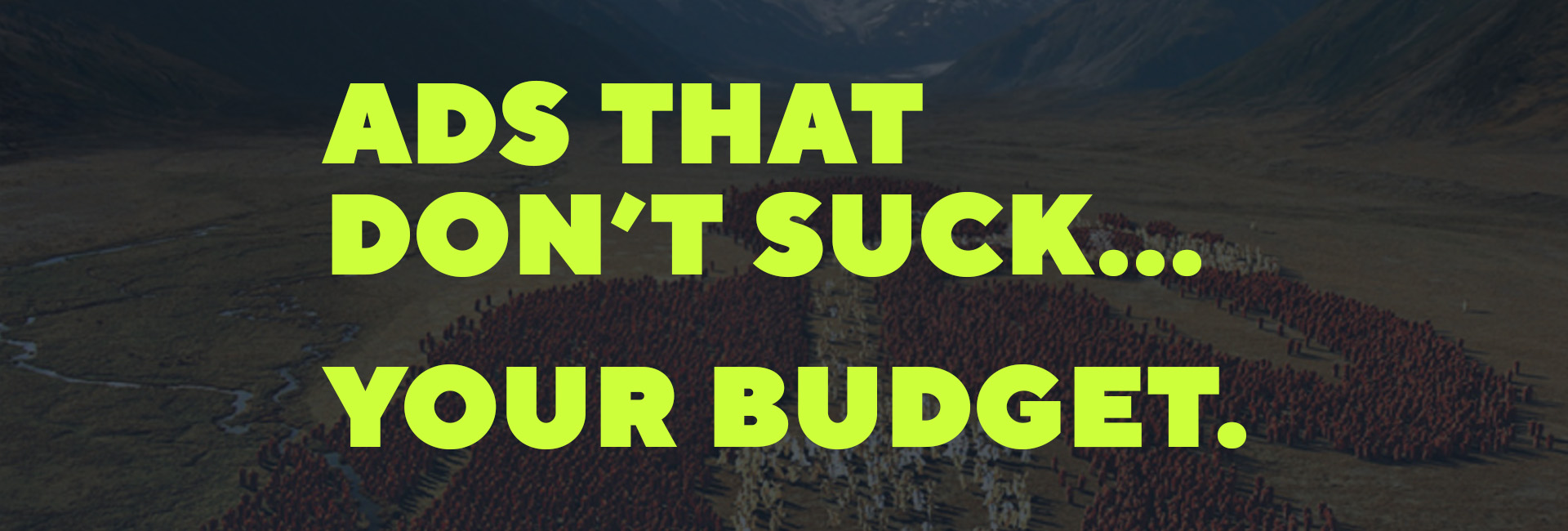
16 Jul IT’S A BIG AD.
VERY BIG AD.
IT’S A BIG AD WE’RE IN.
If you hummed those last couple of words with a nostalgic grin on your face—you’ll know that Carlton Draught’s assertion was right—it was a very big ad. The fact that we all remember it 15 years on, hammers home the immediate and lasting efficacy of video marketing.
Everything about it was grandiose.
The location. The sound design. The concept. All wonderfully tied together with sarcastic and self-aware Australian humour.
I can’t help but consider—what was it like behind-the-scenes? Without everyone starting from the same page, it may have been a big headache.
A very big headache.
I can only speculate and admire from afar as a fellow video content creator who aspires to make content as good as Carlton Draught.
Decades of experience as a video creation expert tells me that if you’re taking a big risk logistically, creatively—and no doubt financially to produce great work, you better have your creators actively involved from day one.
This is a lesson I’ve learned (and taught) over and over:
Doing so can help reduce stress during production and increase the likelihood of the project’s success.
This is because including video creation experts early on aligns creative ambition with realistic limitations. Our job is to be aware of the minutiae that go into making powerful content possible.
Let’s look at Carlton Draught’s Big Ad as an example.
One big ad, thousands of little pieces
I’m not speaking metaphorically here.
Just to get this ad off the ground, 300 extras were briefed, dressed and directed in the mountains near Queenstown, New Zealand.
Carlton Draught even enlisted the help of creative directors who’d just finished working on The Lord of the Rings to make sure everything went smoothly.
Talk about an all-star team.
Ant Keogh, the original creator of the ad, said that when he pitched the idea to the client, he was sceptical that they’d run with it due to its sheer size. He and his co-creator came up with the idea on a train ride home—knowing that before they tackled the details, they’d need to run it by the entire team first. To their surprise, the client loved the concept and gave it the greenlight.
Of course, Carlton Draught had the capital necessary to take a risk on an ad of this scale—but you can be sure they had a lot of questions to sort through before giving the go-ahead.
Having not been part of these big discussions, my expertise tells me that these would have been some of the most pressing questions:
Can we safely manage all the people needed for this to happen?
How will we most effectively allocate our resources?
Are we setting a realistic timeframe?
Break down ideas before you build them up
Some of our most successful clients understand this and were happy for us to take a deep dive into these questions before we began working on their campaign.
Clients such as Subaru, Fantastic Furniture and UNIBET understood that involving P2 as early as possible was imperative for their campaign’s success.
Even though they’re already well versed in sales and marketing tactics—they recognise the importance of uniting with the specialists they plan to work with early in the fold.
This is what gives these companies an edge in their video marketing.
They don’t waste their time and money trying to tweak, redesign and perfect a concept before they’ve even spoken with their video creation experts.
Companies that do, often end up eating into the very resources they’re trying to protect.
This brings us to the next issue that the early merging of teams can mitigate.
Make your resources count
The reckless misallocation of resources in this industry never ceases to amaze me.
The notion that no idea is a bad idea can be a costly one. Sure, everyone involved in the creative process should be heard, but there comes a time where pragmatism meets the need for democratic expression.
This is where experienced video content creators earn their keep. We allow you the time to gather and form your ideas cohesively, but we know when to keep you moving.
Because we’re aware of your budget limitations, we know when to pause for a breather and where to change direction. This is how, as video creation experts, we prevent the misallocation of time and money.
Had Ant Keogh and his partner planned the entire advertisement before uniting with the rest of their team, it could have ended in a great waste of resources.
What if after weeks of planning (on the payroll) they were informed by the film crew that the proposed budget was too low. Or that the casting crew will require far more time to gather 300 extras. These are issues that are solved by uniting teams early on in the piece. Time and money are saved and allocated more efficiently during the actual creation process where they are needed the most.
United teams are successful teams
In this competitive industry, it’s imperative for teams to be united under the same banner. Without clarity of direction and cohesive collaboration, your video content is destined to get lost in the noise.
This is where onboarding video creation experts early can be game-changing. At first, it may feel limiting—with experienced creators likely to tell you what is and isn’t achievable from day one—but don’t be put off by this. Being aware of your limitations doesn’t prevent you from creating memorable video content, it enables you to.
It shines a light on the direction you must take and the resources that you’ll need to get there.
NEVER. NOT. STAND OUT.
Marc Collister, General Manager / Partner, P2
marc@p2.com.au

